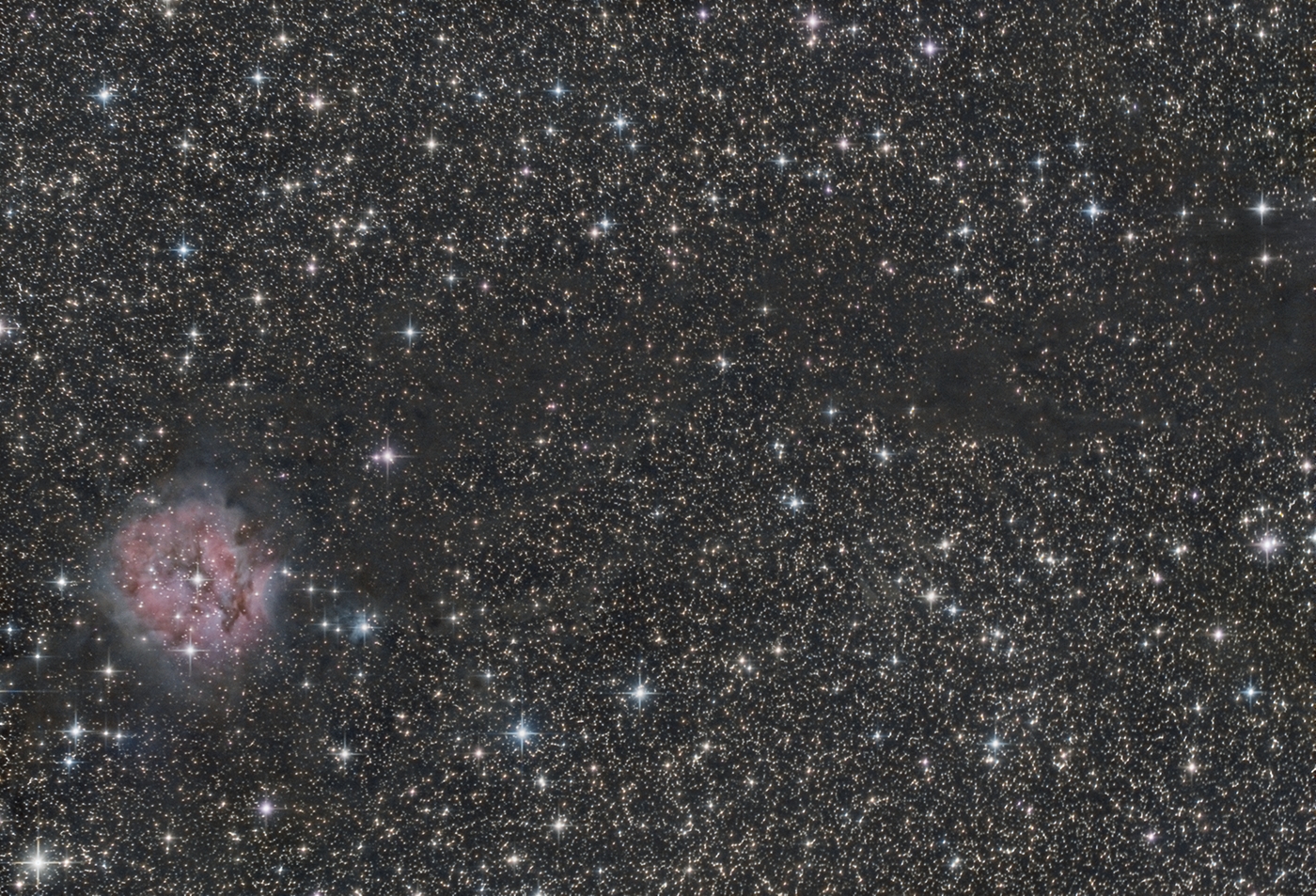
IC 5146 is a small round emission nebula in northern Cygnus with a prominent large dark nebula, designated Barnard 168, running towards it from the northwest. Several dark lanes are superimposed on the Cocoon Nebula itself. Inside the Cocoon, an open cluster of young stars is developing. Like other such stellar nurseries, the Cocoon Nebula is, at the same time, an emission nebula, a reflection nebula, and an absorption nebula. The nebula's central star, which formed about 100,000 years ago, now provides the energy source for most of the emitted and reflected light of the nebula. The globular structure of the Cocoon Nebula is rare in this part of the Milky Way, which is dominated by large diffuse HII regions. It is located at a distance of about 4,000 light years.
 IC 5146 - Cocoon Nebula, Triplet telescope image.
IC 5146 - Cocoon Nebula, Triplet telescope image.
Exposure Data
Observing Hints
The Cocoon Nebula is located a bit apart of the main plane of the Milky Way in a relatively "anonymous" region, nearly at the border between Cygnus and Lacerta. It is not especially easy to find it, but there are a few "landmarks". A good sky chart like Uranometria or Sky Atlas 2000 should be at hand.
Starting point is Deneb, Alpha Cygni. Going NE, you can follow a chain of brighter stars, all of them conspicuous in the finderscope. They form a curve which becomes flatter towards the east. If you continue the slight curve after the chain's end, you will hit the galactic star cluster M39. From there, the starhop becomes a little bit more difficult: 1.5 degrees north of M39 there is another chain of brighter stars, going a bit zigzag mainly east and a bit south. The last star of that chain is the conspicuous bright star Pi2 Cyg. Ok, once there, you can either continue with the finderscope, or, if you own a rich- field telescope, switch to the main telescope and use a low-power eyepiece.
Once you have located the Cocoon Nebula, you don't need a very big telescope to observe it. A fine 4" refractor is enough, given a dark 6mag+ sky. Without filter at low power (3.5 to 4 mm exit pupil) a dim nebula is discernable using averted vision. Of course seeing the nebula becomes easier using bigger telescopes, but, interestingly, a nebula filter is counter-productive. Even in an 18" scope, the nebula is inconspicuous using an UHC filter, and quite unobservable using an OIII filter. A better choice might be a H-beta filter, but the best view of the Cocoon is to be had without any filter, because then the nebula appears as in an 18" telescope as "cotton pad" with a few stars superimposed on it. These stars are not faint, and readily observable in smaller scopes, more easily than the nebula itself. The Cocoon Nebula is not very hard to see, but it takes some experience if you want to observe it in smaller telescopes.